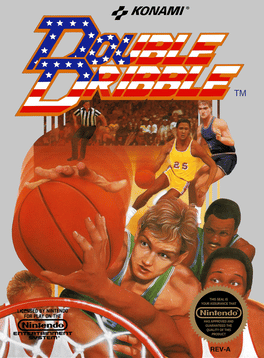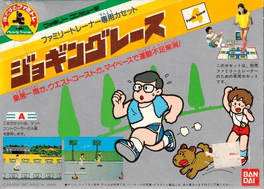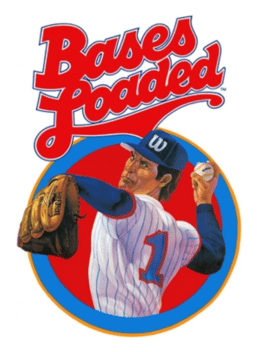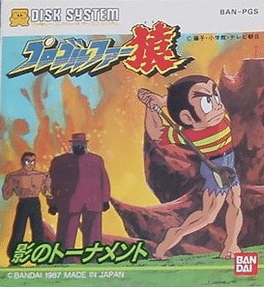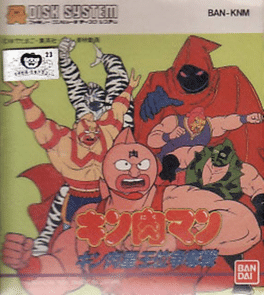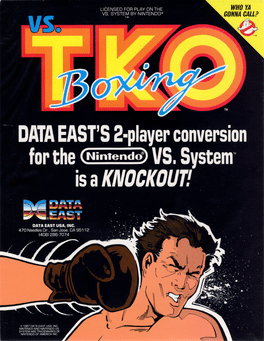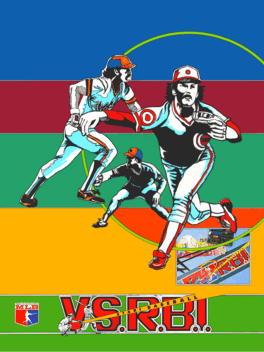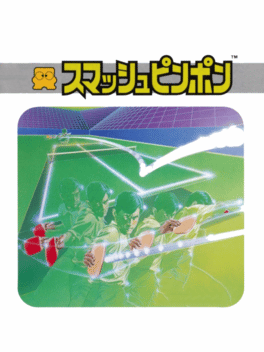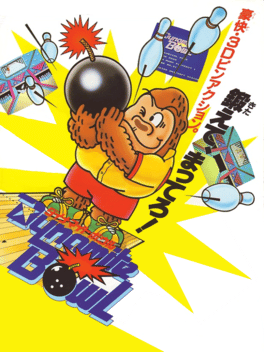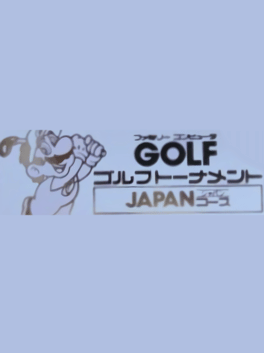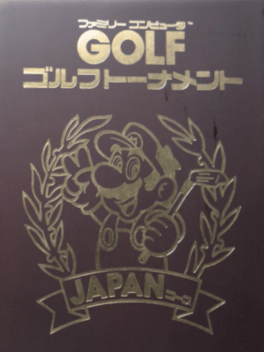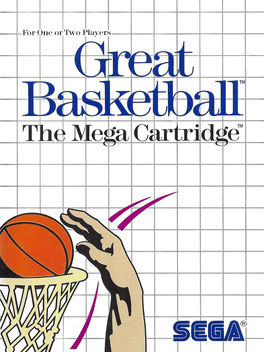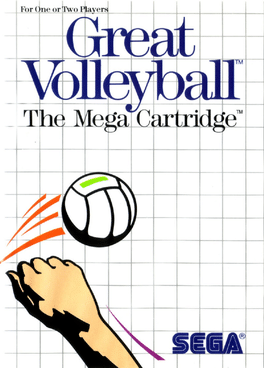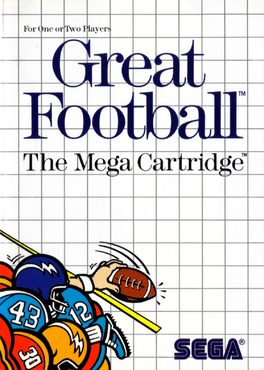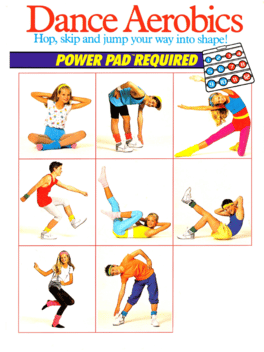New Sport Games - Page 234
-
Double Dribble
1987
Double Dribble
1987
The NES port of Double Dribble, the second basketball arcade game by Konami, following Super Basketball. -
California Games
1987
California Games
1987
star 7.5Introducing the gnarliest bunch of games under the sun! Games invented on the beaches by sun-baked beach bums with a fondness for ripping, grinding, and shredding. With six radically thrilling events intended to bring you to the edge and blow your mind. And make adrenaline California's most plentiful natural resource. -
Family Trainer: Jogging Race
1987
An exercise game created for the Family Trainer (the Japanese name for the NES Power Pad) developed by Human and published by Bandai. Jogging Race is the fourth game created by Bandai for the Family Trainer (US: Power Pad) accessory for Famicom systems. It was one of the many games that used the peripheral that did not see a release outside of Japan. As with other Family Trainer games, the emphasis was on receiving a work out using the Famicom, a conceit that would later find greater success with the Nintendo Wii and the Wii Fit games. Specifically, Jogging Race is about jogging through areas of a simulated Tokyo using the pad to simulate the exercise. The background scrolls by slowly, accurately matching the scale of the distances found in the real location, and will occasionally include additional details like other joggers. There is also a second mode named Marathon, in which the player competes in a long distance race with other CPU runners. -
Bases Loaded
1987
Bases Loaded
1987
star 7.4Bases Loaded is a baseball game that was released for Arcade and the Nintendo Entertainment System in 1987. It was developed by Jaleco and TOSE, and was the first installment in the Bases Loaded series, which was followed by seven sequels for three generations of consoles. The game tried to focus on the confrontation between the pitcher and the batter, putting emphasis on the face-off between the two. Unfortunately, this made the perspective fairly limited in determining where to hit the ball, or even where the ball was during a pitch. -
Pro Golfer Saru: Kage no Tournament
1987
Sarumaru Sarutani is a professional golfer, determined to defeat the shadowy Mr. X and his syndicate of evil golfers, including Dragon the kung-fu golf master. -
Family Computer Golf: U.S. Course
1987
Family Computer Golf: U.S. Course is a Japan-exclusive golf starring Mario and Luigi. It is similar in gameplay to the earlier Golf and the later NES Open Tournament Golf. The courses in the game are based on real-life courses in the United States of America. It is also a companion title to Family Computer Golf: Japan Course, a similar game released a few months earlier, which had courses based on real-life courses in Japan. -
Touch Down Fever
1987
Touch Down Fever
1987
A close-up overhead-view football game with an energetic soundtrack. The CPU can be configured to operate as a two-player upright or as a four player stand-up cocktail. -
Kinnikuman: Kinniku-sei Oui Soudatsusen
1987
Being the only back-to-back two-time champion in Chojin Olympics history and having defeated the Akuma Chojins, the Devil Knights, and having won the Dream Choujin Tag Tournament against the Perfect Choujins, Kinniku Suguru had proven himself worthy to take over his father's throne. However, the 5 Evil Gods feared that Kinnikuman taking the throne would be a threat to their evil plans. FIGHT! And help Suguru take his rightful place on the throne. -
Vs. TKO Boxing
1987
Vs. TKO Boxing
1987
The Nintendo Vs version of Data Easts Ring King. It was available as a Nintendo Vs Conversion Kit. -
Atari R.B.I. Baseball
1987
Atari R.B.I. Baseball was produced by Atari Games in 1987. A simple baseball game. Choose from ten different teams and compete against another player or the computer. -
Smash Table Tennis
1987
Smash Table Tennis
1987
This table tennis game was originally released only in Japan for the Famicom Disk System. -
Dynamite Bowl
1987
Dynamite Bowl
1987
The general concept is that up to five players can play on any of the 30 bowling lanes available; simulating the concept of being in a bowling league. Players can change their lane positioning, determine how strong the throw is, and even make the ball go through various curves (or even through a straight ball into the pins). Each player character can be either male or female with options for bowling ball weights ranging from 7 pounds or 3.2 kilograms to 15 pounds or 6.8 kilograms. -
Rocky
1987
Rocky
1987
star 6Rocky Super Action Boxing is the first licensed video game based on the popular Rocky film series. The game is based on Rocky III and was designed by Coleco. In the game, the player can play as either Rocky Balboa or Clubber Lang in the game, either against the computer in a one player game, or against each other in a "Head to Head" two player mode. There is also a "Demo" mode if the player wants to watch Rocky and Clubber Lang fight. Since Rocky Super Action Boxing is one of the later ColecoVision titles released, it includes a pause feature for the game. Each boxing match consists of, according to the skill level chosen, two, five, ten, or fifteen rounds each lasting one minute each. During gameplay, the player's movement is restricted to three positions or "lanes" vertically, and from each player's side of the ring to the front of their opponent horizontally. The 4 button controller allows for (independently) offensive hits to the body or head, defensive blocking for the head and body, and ducking. Points ar -
Great Basketball
1987
Great Basketball
1987
This is basketball at the professional level. Full of international competition from the first jump ball to the last jump shot. Whether it's four on three or three on two - the action is fast and furious. And there are no favorites in this demanding play. You'll be called for double dribbling, cheered for every slam-dunk and carried off the court for making the winning free throw. But so will your opponent. So go for it. Your tough offense can put a "fast break" in the opposing team's stride while your defense remains solid as a rock. But think fast - because two can play at this game - and only one can win! -
Great Volleyball
1987
Great Volleyball
1987
Great Volleyball (グレートバレーボール) is a sports game developed and published by Sega for the Sega Master System. It is part of the Great Sports series and was released internationally in 1987. -
Great Football
1987
Great Football
1987
Playoff fever grips you. And no wonder. You're the driving force that can take your football team to the top in this rough and tumble contest between the leagues. The outcome of the game is in your hands. As the quarterback, you select the plays. Line up the formations. Call the signals and carry the ball. Cut down your opponent with deadly blocking. Intercept a pass. Make a flying tackle. All you need is skill. Strategy. Cunning. And nerve. For non-stop action that charges across the screen. You decide to pass. It looks good. Touchdown! -
Winter Games
1987
-
Dance Aerobics
1987
Dance Aerobics
1987
Dance Aerobics is a chance to get fit by following the movements of an aerobics instructor. Players use side B of the Power Pad accessory (a floor mat with 12 pads in a 4 by 3 grid) to follow the movements of an aerobics instructor. To succeed the player must press the pads with their feet and hands at the same time as the on screen aerobics instructor. Any missed movements are recorded on a mistake counter and 10 missed movements will fail the level. The routines (a set of repeated movements) start slow and simple with a bit of no-penalty practise time however as the player gets better the routines get more complex with less practices time. Each level has a set number of routines that increase with each level from 4 at the start to a total of 32 on the final level (level 7). At the successful completion of each level the player will get a pass stamp which they can enter later to skip that level.
